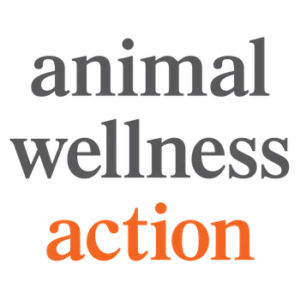Recently publicized grant to Hoopa Valley Tribe reveals that the cost of killing more than 450,000 barred owls, including in national parks and roadless areas, will eclipse a billion dollars — or 10 times the annual budget for all federal endangered species recovery programs
Seattle, WA — Today the Center for a Humane Economy (“the Center”) and Animal Wellness Action said that the U.S. Fish and Wildlife Service’s barred owl kill plan may have a price tag of $1.35 billion over 30 years. Based on this finding, the organizations are calling on President-elect Trump’s Department of Government Efficiency (DOGE) to make nixing this program one of its first priorities.
The Fish and Wildlife Service (FWS) filed a Record of Decision on the barred owl management plan in late August, after completing work on a Final Environmental Impact Statement (FEIS) on the largest-ever raptor-killing plan in the world. In November, the Center and Animal Wellness Action filed a lawsuit in U.S. District Court in Seattle to block the overreaching and unworkable plan targeting a species protected for a century by the Migratory Bird Treaty Act.

Now comes the startling news that the total cost of the plan may amount to well more than a billion dollars. A recent grant by the National Fish and Wildlife Foundation — whose largest donor is the FWS — provides a benchmark cost estimate for the program. The foundation funded a $4.5 million grant request by the Hoopa Valley Tribe to kill up to 1,500 owls. Taking the total grant cost and applying it to the number of owls to be killed, the cost estimate per owl is $3,000. With this investment-to-cost ratio as a new baseline for an economic analysis, the cost of killing 450,000 owls across the Northwest over 30 years, as the FEIS details, would be $1.35 billion.
“In a target-rich environment of wasteful and reckless spending projects, the DOGE cannot miss by shooting down a forest-owl kill plan that is a budget buster of the first order,” said Wayne Pacelle, president of Animal Wellness Action and the Center for a Humane Economy. “If it costs $4.5 million to shoot 1500 barred owls in a small swath of land in northern California, it’s going to cost at least $1.35 billion to conduct a kill of more than 450,000 owls across up to 24 million acres of land in the Pacific Northwest. What a colossal waste of life and money.”
The FWS failed to address the costs of the program in a 300-page FEIS. “Now we know why the Fish and Wildlife Service dodged the issue of the cost in its environmental review,” added Pacelle. “Hiding the cost was prerequisite to win approval of the plan. It’s bad enough that the program will cannibalize so many resources, but it’s even worse that it will do no good because it is so thoroughly unworkable. In-migration of owls will keep the agency on a never-ending treadmill of owl killing and it is doomed to fail.”
“The grant to the Hoopa, who are the most practiced owl hunters in the United States, underscores that the FWS talking point that ‘volunteer’ hunters would conduct the shooting program is folly,” added Jennifer McCausland, senior vice president of the Center for a Humane Economy. “We’ve said from the start that this program would have an enormous price tag, but these numbers have even startled us.”
The unprecedented scheme to kill barred owls — a species native to North America — has been initiated to reduce social competition between that species and its look-alike cousins, the Northern Spotted owl and the California Spotted owl. Spotted owls have experienced significant population decline over decades because of habitat destruction, particularly the harvesting of old growth forest.
In recent weeks, the Center and Animal Wellness Action also highlighted an additional element of the plan that is deeply disturbing: opening up 14 units of the National Park Service to owl hunting, which will persist for at least 30 years if the scheme is implemented as proposed. The units include Crater Lake, Mount Rainier, Olympic, Redwoods, and Yosemite national parks.
Barred owls have engaged in range expansion, which is a naturally occurring ecological phenomenon and it is a core behavioral and adaptive characteristic of many species of birds and mammals, including barred owls. Former FWS wildlife biologist Kent Livezey noted, in a peer-reviewed paper, that 111 other native bird species engaged in “recent” range expansion, with 14 of them expanding over an area larger than the area where barred owls are moving. “To say that this plan is unprecedented is an understatement,” said Livezey, who is extensively published on spotted owls, barred owls, and range expansion of native bird species in the United States.
Eric Forsman, dean of forest owl biologists and a former federal wildlife biologist whose studies were instrumental in triggering major habitat protection plans to preserve spotted owls, also panned the barred owl kill plan in recent comments to the Cascadia Daily Times in Washington state. “It doesn’t give me any satisfaction at all to say this, but trying to control barred owls is largely a waste of time,” Forsman said. “That genie is out of the bottle.”
The Center and Animal Wellness Action have built a coalition of more than 240 organizations opposing the USFWS barred owl kill-plan. That coalition includes more than 20 local Audubon organizations. The coalition also includes owl protection and raptor rehabilitation centers across the West.
In their original legal pleading filed in November, the plaintiffs allege that FWS has violated the National Environmental Policy Act by failing to properly analyze the impacts of their strategy and improperly rejecting reasonable alternatives. The case was filed in U.S. District Court in Seattle.

